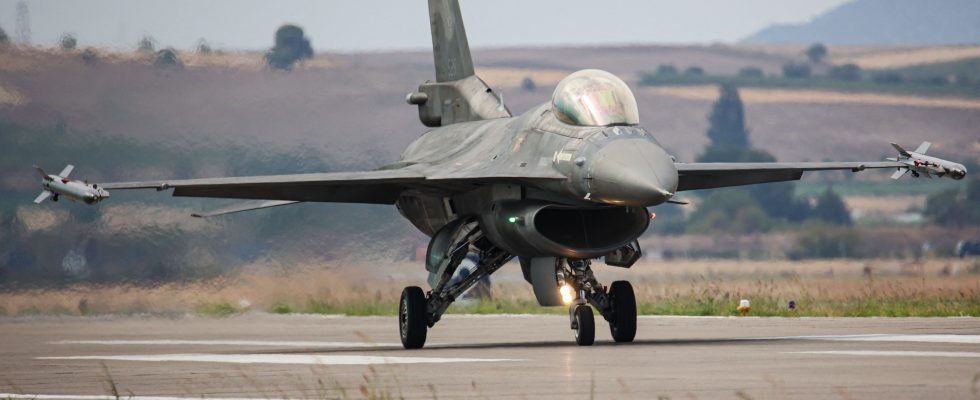The ball is in Washington’s court. After proposing to build an “international coalition” to deliver modern technology combat aircraft to kyiv, London is seeking authorization and material support from the United States. Ukrainian President Volodymyr Zelensky has been asking his Western allies for months to provide him with F-16s – considered the most reliable and versatile aircraft in the world – which would allow the Ukrainian army to strike deep into Russian troops. In February, the Ukrainian Air Force said kyiv needed 200 multirole fighter jets to defend its airspace.
A claim that has been debated for months within the European Union. Tuesday, May 16, London and The Hague announced that they wanted to build “an international coalition” to supply F-16s to Ukraine. At a joint press conference in Berlin, the British and German Defense Ministers nevertheless felt the next day that it was up to “the White House to decide whether the F-16 fighter jets can be delivered” to Kiev. .
Washington’s endorsement will be needed
As Berlin had to give its approval for the use of Leopard Tanks in Ukraine, that of Joe Biden will be necessary to deliver these planes. These fighter jets are of American origin and are particularly common in European armies. Many countries, such as Denmark and Romania, are also replacing their F-16s with more modern F-35s, paving the way for donations of scrapped aircraft.
Faced with requests from Kiev, several countries such as Slovakia and Poland have already taken an important step by sending several MiG-29, Soviet-designed combat aircraft, last March. Warsaw was then said to be ready to give all its copies of hunters, that is to say about thirty. But despite London’s initiative, Ukraine’s allies continue to dither on the delivery of modern aircraft. “We don’t have F-16s and we’re not going to deliver Typhoon aircraft, but of course we can help with pilot training and support,” British Minister Ben Wallace said on Wednesday.
After accelerating its engagement with kyiv in recent weeks, the German government is also maintaining a cautious stance on this coalition. “We cannot play an active role in such an alliance, in such a coalition, because we have neither the training capabilities, nor the skills, nor the planes,” said German Minister Boris Pistorius. “Germany could, however, make military airports available for training on F-16 fighter jets, carried out by pilots from other countries,” proposed the chairman of the defense committee at the Bundestag.
Three years to train a pilot
In Washington, the question of the delivery of modern planes like the F-16 or the F-35 continues to be debated. So far, President Joe Biden has opposed a categorical “no” to all requests from Ukraine on this subject, fearing escalation in the face of a Russia which displays its nuclear arsenal a little more each week. The Democratic government considers it more judicious to continue to invest in ground support, after having given in particular on the delivery of the Abrahams tanks. The transfer of F-16s to Ukraine by other countries has not yet been explicitly ruled out.
Other countries, such as France or Spain, which have F-16s or other modern combat aircraft, also refuse Volodymyr Zelensky’s request. On May 15, during the visit of the Ukrainian president to Paris – in search of increased support as the major spring counter-offensive approached – the question of the delivery of modern combat aircraft was deemed “premature” a adviser to Emmanuel Macron, who stressed the need to train pilots first. A long and complex process, which lasts about 3 years.
